Realising the need to revamp the public administration, Department of Administrative Reforms and Public Grievances (DARPG) appointed a commission of inquiry, called the Second Administrative Reforms Commission (SARC) “to prepare a detailed blueprint for revamping the public administration system” on August 31, 2005. The commission is required “to suggest measures to achieve a proactive, responsive, accountable, sustainable and efficient administration for the country at all levels of the government.” The commission will, inter alia, consider (ix) Citizen-centric administration, and (x) Promoting e-governance.
Promoting E-governance
E-governance promotion is based on two important planks: (a) To reduce red-tape, delay and inconveniences through technology interventions including the use of modern tools, techniques and instruments of e-governance, and (b) Promote knowledge sharing to realise continuous improvement in the quality of governance (ibid.).
The Second Administrative Reforms Commission (SARC) has now released its much-awaited report on e-governance entitled “Promoting e-Governance: The SMART Way Forward” (eleventh report; December 2008) on January 25, 2009 in New Delhi. The Commission needs to be congratulated for placing its entire report online (http://arc.gov.in/11threp/ARC_11th_report.htm) and that too immediately after its release thus making it accessible to a large number of people. The Department of Administrative Reforms and Public Grievances (DARPG) too needs to be congratulated for specifically including the item of “Promoting e-governance” for consideration of the commission showing Department’s commitment to the cause of e-governance.
E-governance for All by 2020
Recognising the importance of e-governance, the Second Administrative Reforms Commission (SARC) has given a call for making e-governance available to all by 2020. The Commission, among other things, has recommended that “A clear road map with a set of milestones should be outlined by Government of India with the ultimate objective of transforming the citizen-government interaction at all levels to the e-Governance mode by 2020.”
Recommendations
The Commission has summed up its recommendations in wide-ranging 17 categories. In Category 1: Building a Congenial Environment, the Commission has recommended “Providing political support at the highest level” for successful implementation of e-governance initiatives. In Category 2: Identification of E-governance Projects and Prioritisation, the Commission has categorized e-governance initiatives into five categories ranging from simple (provision of information) to complex (creation and integration of complex databases). In Category 3: Business Process Re-engineering, the Commission has recommended: “…….governmental forms, processes and structures should be re-designed to make them adaptable to e-Governance, backed by procedural, institutional and legal changes.” In Category 4. Capacity Building and Creating Awareness, the Commission has rightly laid emphasis on training, and in particular has recommended: “A network of training institutions needs to be created in the States with the Administrative Training Institutes at the apex. The Administrative Training Institutes in various States should take up capacity building programmes in e-Governance, by establishing strong e-Governance wings. ATIs need to be strengthened under the NeGP.”
In Category 5: Developing Technological Solutions the Commission has laid emphasis on ‘enterprise architecture’ framework, observing “There is a need to develop a national e-Governance ‘enterprise architecture’ framework as has been done in some countries.” In Category 6: Implementation, an important category as e-governance projects are known to fail quite frequently, in addition to familiar observations on project management the focus is on websites and change management, two items important in their own right. In Category 7: Monitoring and Evaluation, the Commission makes routine observations. In Category 8: Institutional Framework for Coordination and Sharing of Resources/Information, the Commission urges that the “Departments of Information Technology at the Union and State Government levels should provide institutional support to other departments and organizations in implementation of e-Governance projects identified and conceptualized by them.” In Category 9: Public-Private Partnership (PPP), the Commission recommends that “Several components of e-Governance projects lend themselves to the Public-Private Partnership (PPP) mode. In all such cases (PPP) should be the preferred mode.”
In Category 10: Protecting Critical Information Infrastructure Assets, the Commission recommends “There is need to develop a critical information infrastructure assets protection strategy. This should be supplemented with improved analysis and warning capabilities as well as improved information sharing on threats and vulnerabilities.” In Category 11: The Common Support Infrastructure, the Commission re-iterates the recommendation of the Standing Committee on Information Technology in its 58th Report, that “State Data Centres (SDCs) should be maintained by Government agencies such as NIC as it involves handling of sovereign data. Further, all data centres at the State level should be subsumed in the SDCs.” In Category 12: Mission Mode Projects, the Commission makes a number of recommendations including use of annual performance appraisal report for recording performance in e-governance.
In Category 13: Mission Mode Project on Computerisation of Land Records, the Commission has recommended that “Surveys and measurements need to be carried out in a mission mode utilizing modern technology to arrive at a correct picture of land holdings and land parcels and rectification of outdated maps.” In Category 14: Passport & Visa MMP, the Commission has recommended: “The entire passport issue process needs to be put on an e-Governance mode in phases.” In Category 16: Legal Framework for e-Governance, the Commission makes a far-reaching recommendation: “A clear road map with a set of milestones should be outlined by Government of India with the ultimate objective of transforming the citizen-government interaction at all levels to the e-Governance mode by 2020.” In last Category 17: Knowledge Management, the Commission has recommended: “Union and State Governments should take proactive measures for establishing Knowledge Management systems as a pivotal step for administrative reforms in general and e-Governance in particular.”
A Summing Up
The Second Administrative Reforms Commission, set up in 2005, nearly four decades after the first was set up in 1966, was required to consider “Promoting e-governance” and “suggest measures to achieve a proactive, responsive, accountable and efficient administration for the country at all levels of the government.” No doubt it was a tall order. Yet it was also a major opportunity to promote the cause of e-governance countrywide at all levels of the government. The report turns out to be a disappointment making recommendations on various aspects of e-governance already currently under implementation. Many of its recommendations are also incomplete.
For example, the Commission makes a salutary but incomplete recommendation on training. While Commission’s focus on training is right, it is not clear as to what it hads in mind while recommending creation of a network of training institutions with the Administrative Training Institutes (ATIs) at the apex as it has not spelled out which training institutes will constitute the network within the state and why. In fact, it is unnecessary to set up any training institution at sub-state level as a capable ATI can, and should, provide training online in the language of the state. More importantly, the Commission is silent on e-governance training capability at the national level including the performance of National Institute of Smart Government (NISG), Hyderabad and other Centres for E-governance which have been or proposed to be set up as in matters like these states often look to the Centre for guidance.
Similarly the Commission has suggested development of a national e-Governance ‘enterprise architecture’ framework but this is already being done by National Informatics Centre (NIC), New Delhi. The Commission has missed the valuable opportunity of getting some of important websites independently evaluated to see if they are meeting their stated objectives and trying to bring some order to what is fast becoming an unregulated jungle of websites with accompanying waste of scarce public resources. In evaluation, no suggestion has been made for any assessment of the functioning of project management unit (PMU) for the National E-governance Plan (NEGP), nor of the evaluation studies carried out so far, nor for that matter, evaluation assessment framework (EAF) Version 2.0.
On computerisation of land records, the Commission has not specified the technology it has in mind (satellite imagery? remote sensing? geographical information system (GIS)?) nor has it mentioned of good work done by the Centre and states. Also it has mixed up rural and urban land records, each of which has separate requirement. No attempt has been made to compare and contrast deeds registration and Torrens system as a result of which citizens continue to be burdened with the onus of proving ownership of land resulting in heavy litigation. There is no mention about chip-based e-passport scheme launched in June 2008 with e-passport likely to be made available from May 2009.
What was wanted was a close knit, clearly articulated, “action plan” for promoting e-governance countrywide. A major opportunity to treat e-governance as a prime mover of administrative reforms has thus been lost. With elections round the corner, various political parties will soon draft their election manifestoes. They owe it to their electorate to include “promotion of e-governance” as an important item in their election manifestos. This opportunity must not be missed. It must be seized in the interest of e-governance so that interests of citizens are better served whether they relate to public policy, regulation, public service delivery or development.
Dr D.C.MISRA
March 18, 2009
Subscribe to:
Post Comments (Atom)






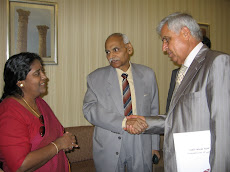
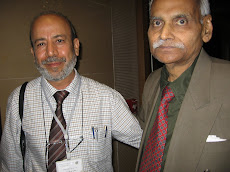
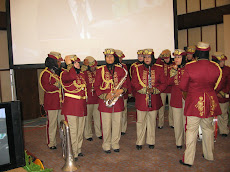
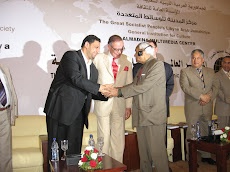

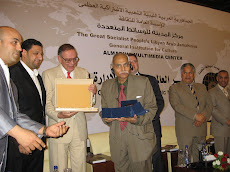


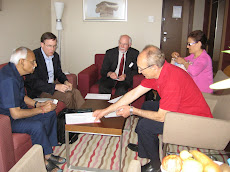

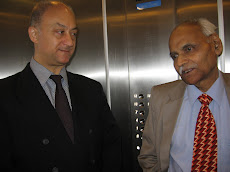
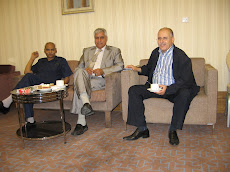












No comments:
Post a Comment